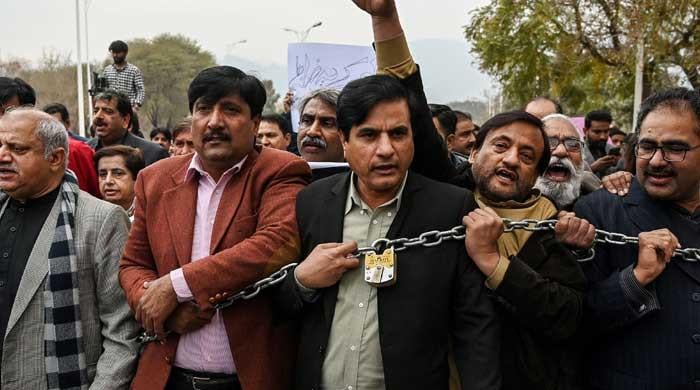The lasting impact of the six day war
The 1967 Isreali war brought unprecedented changes to region and foreign policies of key states
June 08, 2022

Some events have such profound implications and legacy that they leave an indelible mark on history. The Six-Day War fought on June 5-10 in 1967 is one such episode.
Also known as the June War, the 1967 Arab–Israeli War or the Third Arab–Israeli War was fought between Israel and a coalition of Arab states primarily comprising Jordan, Syria, and President Nasser’s Egypt. While there is a long background of how hostilities escalated to a full-scale war, this Armageddon which lasted merely for six days has had unprecedented implications for the region and beyond. If Arabs were led by charismatic Nasser, Israelis were guided to victory by inscrutable Moshe Dayan, defence minister during the war, who was also a fluent speaker of the Arabic language.
In the early morning of June 5, 1967, the Israeli air force attacked air bases throughout Egypt and destroyed most of the Egyptian air force while it was still on the ground. One author has described the scene in these words: “At 7:10 on the morning of Monday, June 5, 1967, Israel Air Force planes took off for their targets deep in Egyptian territory. The June 1967 War began with the first strike on Egyptian military airfields (Operation Moked), whose success meant that Israel had rendered most of its main enemy’s air power useless for the rest of the war. Within half an hour, only Israeli planes were operating in Egyptian skies”.
On June 5 – the first day of the war — Egypt lost 300 of its military aircrafts and 60 airplanes vanished from Syria’s inventory. Israel destroyed 35 Jordanian and 16 Iraqi planes while it lost only 19 of its 400-strong fleet. In addition, the armed forces of the Arab states were decimated. Egypt lost 12,000 men and 80 percent of its air force and armor, Syrian losses were 2,500 killed, and the Jordanian army was temporarily put out of action as a fighting unit.
Egypt and its other Arab allies not only faced huge casualties on the battlefield but also surrendered huge chunks of territory to Israel. Although the Arabs simply outnumbered the Israelis, they could not match them on the battlefield.
The conflict was a decisive triumph for the Israeli military and “a humiliating disaster for the Arab forces, and a shattering blow to Nasserism”. The Zionist state's resounding victory included the capture of the Sinai Peninsula, Gaza Strip, West Bank, and the iconic capture of the Old City of Jerusalem and Golan Heights. Jordan not only lost the West Bank, which had been its most productive agricultural region but it was also deprived of the key tourist attractions of Jerusalem and Bethlehem.
While the Golan Heights did not carry a huge economic loss for Syria, Israel’s occupation of this strategically prized location brought the Israeli forces within easy striking capabilities of Damascus. In his autobiography ‘The White House Years’, Henry Kissinger states that “the new territory seized was three times the size of Israel itself”. This illustrates the magnitude of Israel’s success over its opponents and its increased geostrategic and security significance for the US in the years following 1967.
During the conflict as well as in the post-1967 war era, Washington made two basic judgments: to provide Israel with the unprecedented diplomatic, military, and economic support, and to use the occupied territories of the Sinai, West Bank, Gaza, and the Golan Heights as “bargaining chips to exchange for peace, recognition, and security from the Arab neighbours”.
During the war, various Arab countries including Syria, Yemen, Sudan, Iraq, Algeria, and Egypt announced the severing of diplomatic relations with the US. While Egypt was already enjoying cordial relations with the Soviet Union, the result of the war enhanced their cooperation. To enable the Egyptian military to restore its ego, reputation, and war capabilities, “the Soviets increased their military mission in Egypt to several thousand advisers, making Egypt completely dependent on the Soviet Union for its military survival”.
Although there was backdoor communication between Cairo and Washington on how to strike a peace deal with Israel, the two sides could not agree on the terms and conditions. Overall, this was a period when Egypt was firmly in the Soviet camp and ties between Cairo and Washington remained cut off until these were restored in 1974. Israel’s overwhelming victory over its Arab opponents and the occupation of its enemies’ territories put it politically, diplomatically and strategically in a strong situation. The triumph of Israel was “an American gain as well, since both Egypt and Syria were close allies of the Soviet Union and their defeat was considered a major blow to Kremlin’s prestige in the region”. The conflict was “a disaster of great proportions for Moscow, and a commensurate gain for the United States” at the height of the Cold War.
The 1967 war brought unprecedented changes to the region and foreign policies of key states. On the one hand, the war and its aftermath brought the US and Israel further closer. On the other hand, after realizing its military defeat, Cairo’s foreign policy also witnessed dramatic transformations in the years following the conflict. After realizing that only the US has the power to bring Israelis to the negotiating table, president Sadat of Egypt endeavoured to get US attention and made some diplomatic gestures culminating in breaking the diplomatic stalemate between the two countries.
To appease the US, in July 1972 Sadat abruptly expelled most of the 20,000 members and advisers of the Soviet military mission working in Egypt. It was the beginning of the end of the Soviet-Egypt bonhomie and the onset of a new era in the US-Egypt bilateral ties. After recalibrating its foreign policy and realigning its relations with the superpowers, slowly and gradually Cairo strengthened its ties with the US because it had declared a complete cessation of diplomatic relations with the US following the 1967 war where the US had fully backed Israel.
Surprisingly, Egypt’s bilateral ties with the Soviets became strained within a few years after the death of president Nasser in 1970. During the 1973 Yom Kippur War with Israel, the Soviet Union fully supported Egypt both materially and financially by sending men, aid and ammunition. At one stage Brezhnev even threatened to intervene on behalf of Cairo if Israel violated the ceasefire. However, after the war, Moscow-Cairo ties swiftly deteriorated. While US-Egypt ties were consistently improving, Cairo’s relations with Moscow became increasingly tense during these years.
In September 1981, President Sadat severed ties with the Soviets as the Egyptian government accused Moscow of interference in its domestic affairs and in subversive activities aimed at undermining Sadat's leadership concerning the Israeli-Egyptian peace treaty. Bilateral ties between Cairo and Moscow were restored in 1984 during the regime of President Hosni Mubarak.
The writer holds a PhD from Massey University, New Zealand and teaches at the University of Malakand. He can be reached at: [email protected]
Originally published in The News











